Text
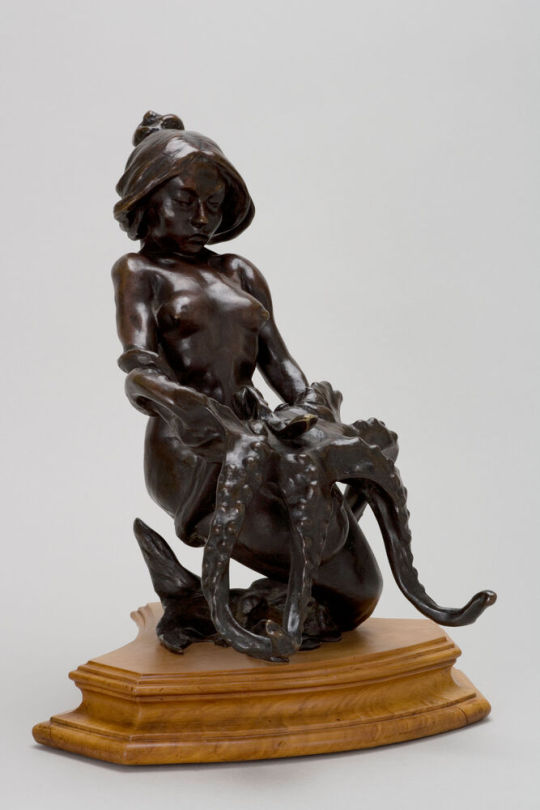
Siren and Octopus Inkwell by François-Rupert Carabin. Made in France around 1900; materials are bronze and wood; dimensions: W. 15 x H. 25 x D. 23.50 cm. From the Ferdinand Wolfgang Neess collection at Museum Wiesbaden in Germany, inventory number: MUWI-KS-AK-0146. Photo by Markus Bollen.
"François-Rupert Carabin is one of the most extravagant representatives of French Art Nouveau. Typical of the Alsatian-born artist is the strong eroticization of the female nude, which also characterizes this small bronze. It was first exhibited at the Salon of the Société Nationale des Beaux-Arts in 1903. An almost identical, undated plaster model of the same size without a signature exists for the object.
The octopus takes the place of the female sexual organ. Like a phallus, the pen holder must be dipped into the ink in order to absorb it. The creative act of writing is reflected in the symbolic pro-creative sexual act with the object. Analogous to the immaterial creation of the text in the writer's head, the sexual act between the writing instrument and the siren/octopus creates the material text." (Author: Thomas Moser)
(Source: museum-wiesbaden.de)
#sculpture#inkwell#inkstand#writing utensils#early 1900s#francois-rupert carabin#french design#art nouveau#human figures#animal figures#mermaid#siren#octopus#marine life#wood#metal#bronze#brown
22 notes
·
View notes
Text


Ring Featuring an Octopus and Nude Woman Holding a Pearl. Designed by François-Rupert Carabin (born in Saverne, Bas-Rhin, France, 1862 – died in Strasbourg, Bas-Rhin, France, 1932). Materials are molten silver and a chrome pearl. Musée d’Orsay inventory number: RF MO OAO 2017 12 9
(Source: musee-orsay.fr)
#ring#jewelry#late 1800s#early 1900s#francois-rupert carabin#french design#art nouveau#animal figures#human figures#marine life#octopus#metal#silver#pearl#grey#b&w
148 notes
·
View notes
Text

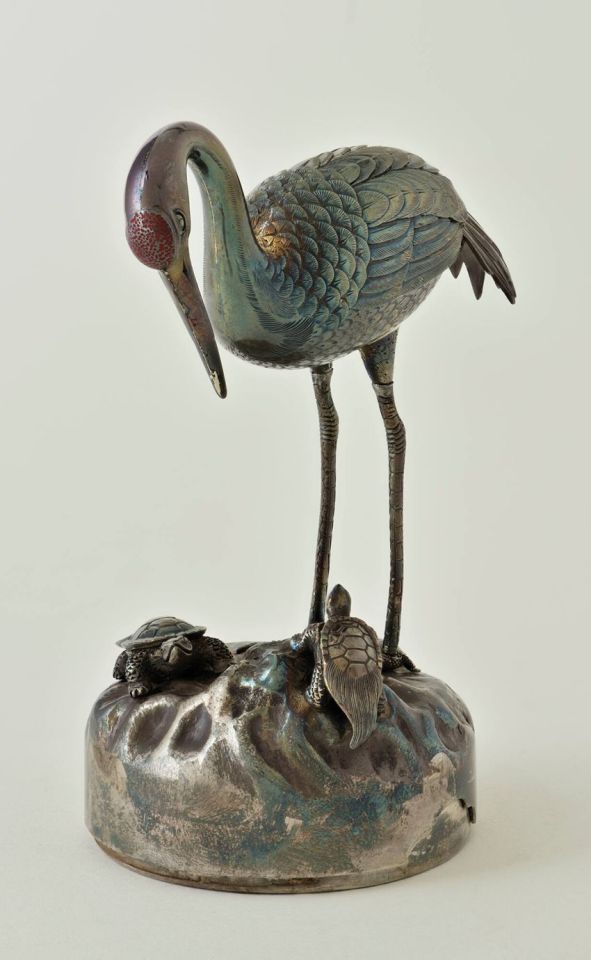

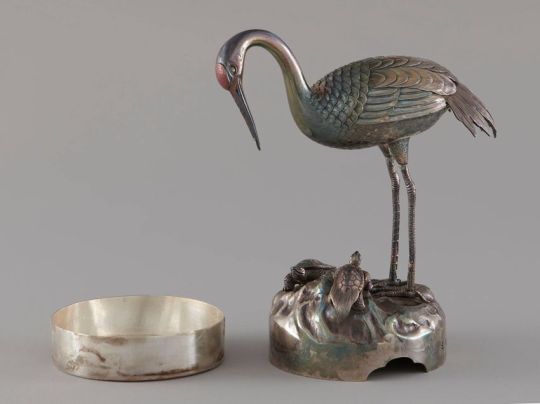

Crane and Tortoise Box. Japanese origin, dated 1894; medium is silver with gold and lacquer; dimensions: 10.5 cm high. From the Isabella Stewart Gardner Museum collection, accession number: M18e44.a-b
"This crane and tortoise box was designed and produced to be given to guests at the imperial banquet for the twenty-fifth wedding anniversary of the Meiji Emperor and Empress in 1894. Often referred to by the French term “bonbonnière,” the box is decorated with a crane and two tortoises (minogame), historic motifs that convey messages of auspiciousness and longevity across East Asia. …"
(Source: gardnermuseum.org)
#bonbonniere#box#containers#late 1800s#meiji period#japanese design#animal motif#crane#tortoise#birds#reptiles#metal#silver#grey#brown
89 notes
·
View notes
Text

'The Noodle Eater', 1849 by Johann Baptist Reiter (Linz 1813–1890 Vienna). Oil on canvas, dimensions: 61.2 × 52.4 cm. Leopold Museum, Vienna, inv. 4718
"In front of a darkened background, a young woman in a rural costume is sitting in the foreground of the picture, eating. The girl's gaze is not directed at the large clay pot in her left hand or at the fork with noodles on which she is blowing cooling air in her right hand, but is focused on nothing. It seems lost in thought. With the unanswered but looming question of the reason for the girl's thoughtfulness, the painter Johann Baptist Reiter (1813–1890) provides a narrative element in his work The Noodle Eater. Linking everyday actions with small stories was typical of painting in the Biedermeier era, especially in Vienna, where the oil painting was created in 1849."
(Source: onlinecollection.leopoldmuseum.org)
#painting#fine art#mid 1800s#biedermeier#johann baptist reiter#austrian art#human figures#noodles#oil paint#canvas#red#brown
74 notes
·
View notes
Text
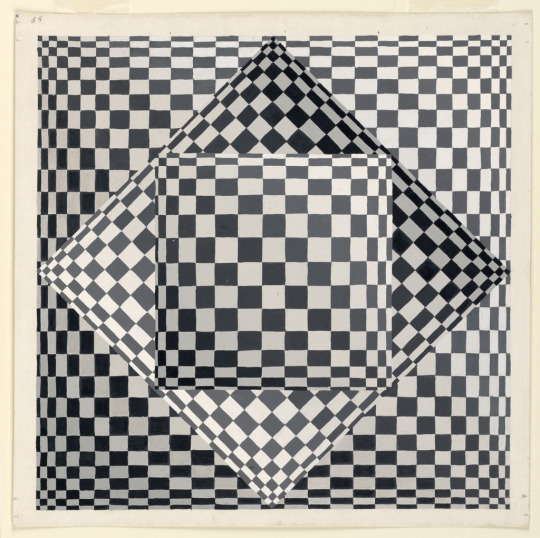


Drawing Exercises in Optical Illusion. The first artwork is by Benjamin J. D’Arconte and the latter two are credited as student artworks. They were donated by Cooper Union Art School to the Cooper Hewitt Smithsonian Design Museum in 1962–63. Medium is grey and white opaque watercolours on white paper. Cooper Hewitt accession numbers: 1962-138-3, 1963-79-8, 1963-79-9.
(Object Links: 1 | 2 | 3 )
#graphic art#optical illusion#1960s#american art#pattern#checker pattern#watercolor#gouache#paper#black#white#beige#b&w
96 notes
·
View notes
Text

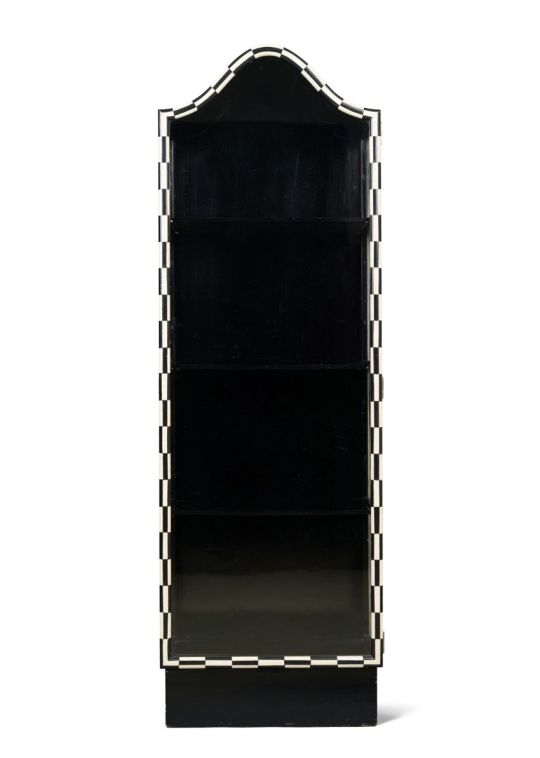
Glass Cabinet in Black and White. Designed by Josef Hoffmann (Pirnitz/Brtnice 1870–1956 Vienna) and manufactured ca. 1906. Materials are wood, lacquer and glass; dimensions: H 184.5 × W 60.3× D 38.5 cm. Leopold Museum, Vienna, Inv. 4352
(Source: onlinecollection.leopoldmuseum.org)
#cabinet#display case#furniture#early 1900s#josef hoffmann#wiener werkstätte#austrian design#vienna secession#jugendstil#wood#lacquer#checker pattern#black#white#b&w
44 notes
·
View notes
Text



Hermetic Case Pocket Watch. Dated around 1925–1935, made by Ebel SA in La Chaux-de-Fonds, Switzerland. Medium is silver with red and black enamelling; dimensions (when closed): h. 31.2 x w. 48.5 x 12.9 mm. From the British Museum collection, museum number: 1970,1208.1
(Source: britishmuseum.org)
#clock#pocket watch#timepieces#metalwork#1920s#1930s#art deco#swiss design#silver#enamel#red#black#grey
317 notes
·
View notes
Text

Silver Table Clock. Designed by Phillip Häusler, executed by Eduard Friedmann, and photographed by Wilhelm Gmeiner in Vienna, 1912. Gelatin silver print; from the exemplary sample collection at MAK Museum Vienna, inventory number: KI 7823-54. One of a total of 110 photographs of objects from the exhibition on Austrian decorative arts at the MAK in 1911/1912.
(Source: sammlung.mak.at)
#clock#timepieces#metalwork#archival photos#early 1900s#1910s#jugendstil#vienna secession#austrian design#silver#paper#black#grey#beige#b&w
30 notes
·
View notes
Text

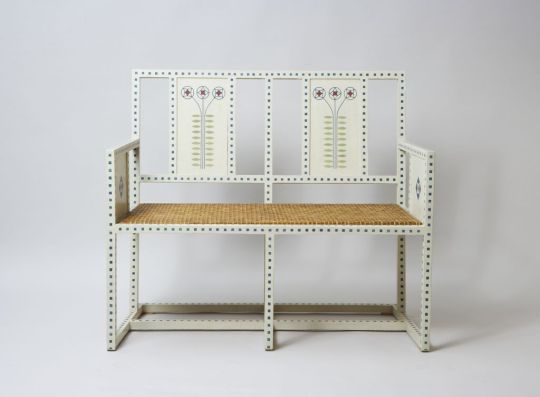
Two-Seat Bench, ca. 1906. Designed by Wilhelm Schmidt (Born in Grulich/Králíky, 1880 – died after 1928) and executed by the Prague-Rudnik Wickerwork Manufactory (Rudnik 1877–1965 Vienna). Medium is wood, white varnished and painted; dimensions: 94 × 110 × 58 cm. Leopold Museum, Vienna, Inv. 4162.
(Source: onlinecollection.leopoldmuseum.org)
#chair#seating#furniture#early 1900s#wilhelm shmidt#vienna secession#jugendstil#czech design#austrian design#nature motif#flowers#wood#wicker#white#beige
46 notes
·
View notes
Text

Art Nouveau Table Clock. German origin, dated around 1905–1910, designer/manufacturer unknown. Medium is brass that has been cast, pressed, patinated and mounted. Dimensions: h. 26 cm x w. 34 cm x 10 cm. From the Grassi Museum of Applied Arts (Leipzig, Germany), inventory number: 2004.35 ad.
“The surface of the brass table clock is almost entirely decorated with a flat relief. Curved band ornaments form a kind of frame for the round dial and the natural depiction of a nocturnal landscape. The figure of a bat, mystified as the messenger of the night in Art Nouveau, hovers in a prominent position above the clockwork.”
(Source: sammlung.grassimak.de)
#table clock#timepieces#early 1900s#german design#art nouveau#jugendstil#animal motif#bats#metal#brass#yellow#brown
69 notes
·
View notes
Text
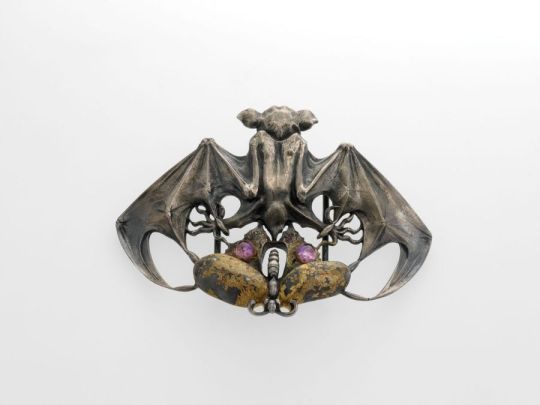
'Day and Night' Belt Applique by Phillipe Wolfers (Belgian, 1858–1929). Dated 1897, materials are silver, vermeil and amethyst, dimensions: h. 9 cm x w. 12.5 cm. Part of the Belgian Royal Museums of Art and History (MRAH), Phillipe and Marcel Wolfers Collection. Digitally archived by the Brussels-Capital Region Inventory of Moveable Heritage, inventory number: D2017.023.001
(Source: collections.heritage.brussels)
#buckle#clasp#jewelry#late 1800s#phillipe wolfers#belgian design#art nouveau#animal motif#bats#butterflies#metal#silver#gilding#stone#amethyst#grey#yellow#purple
51 notes
·
View notes
Text
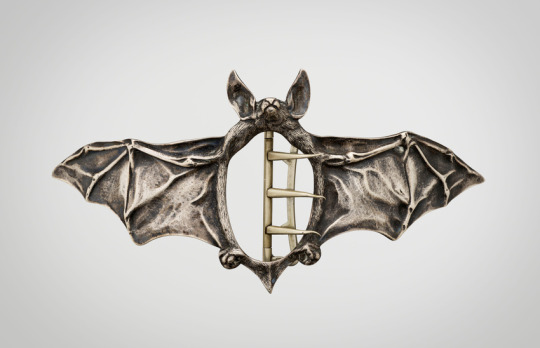
Bat Belt Buckle. Designed by Ferdinand Erhart and made around 1908 in Paris. Medium is cast, chiseled and oxidised silver; dimensions: h. 6.7 cm x w. 13.2 cm x d. 3.2 cm. Musée d'Orsay inventory number: OAO 1334.
(Source: musee-orsay.fr)
#buckle#clasp#jewelry#early 1900s#art nouveau#ferdinand erhart#french design#animal motif#bats#metal#silver#grey#b&w
169 notes
·
View notes
Text

Cupboard Owned (and Decorated) by German Art Nouveau and Symbolist Painter, Carl Strathmann (1866–1939). Dimensions: 179 cm x 98 cm x 51 cm. From the Munich City Museum, Applied Arts Collection, inventory number: M-71/4.
"… The simple spruce cabinet with fluted side frames and a straight cornice was originally decorated with no other decorative motifs. The artist attached a slatted frame with geometrically arranged, gilded decorative nails to the front of the cabinet and provided the right side with a vertical structure. He decorated the cornice, the upper corners and the right side with embossed brass sheets, with the brass heads and nails in a repeat pattern. The frame and the lower panels are painted with classical palmettes, garlands and wreaths. The main field shows a tree with golden fruits. The unfinished left side reveals that the cabinet was intended for a corner of the room."
(Source: sammlungonline.muenchner-stadtmuseum.de)
#cabinet#wardrobe#furniture#early 1900s#carl strathmann#art nouveau#jugendstil#german design#nature motif#trees#wood#metal#gilding#brown#yellow
244 notes
·
View notes
Text



‘Self-Portrait as a Chimera’ Inkwell by Sarah Bernhardt. Made in Paris, ca. 1880, medium is bronze. Art Institute Chicago reference number: 2021.2
“French actor and artist Sarah Bernhardt was perhaps the first global superstar, with legions of admirers spread across Britain, continental Europe, North and South America, and as far afield as Australia. In this fantastical bronze inkwell, she portrayed herself as a chimera, a mythological creature composed of disparate body parts. Here, Bernhardt joined her human torso and head to clawed haunches, bat wings, and a dragon-like tail. The work is a key example of her inspired use of visual media to fashion and promote her own image.”
(Source: artic.edu)
#sculpture#inkwell#inkstand#vessels#containers#19th century#late 1800s#sarah bernhardt#french design#human figures#animal figures#chimera#bronze#brown
109 notes
·
View notes
Text
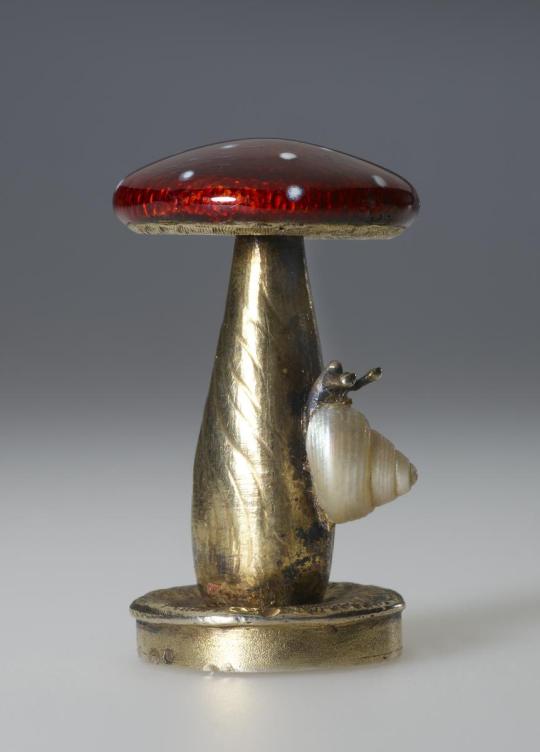
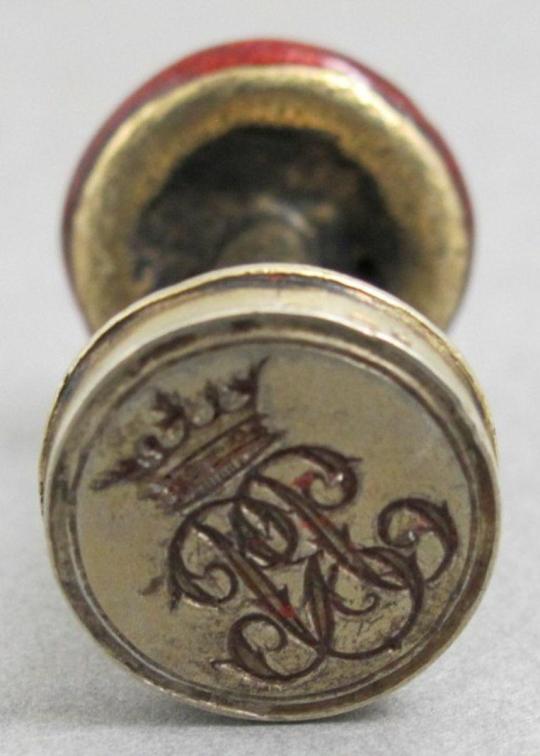

Stamp Seal with a Toadstool Base. Manufactured in the 2nd half of the 19th century, presumed Russian origin. Materials are vermeil (silver gilded with gold), enamel paint and shell. From the Musée d'Art et d'Histoire, Geneva, inventory number: 018080.
(Source: mahmah.ch)
#stamp seal#wax seal#trinkets#mid 1800s#late 1800s#russian design#nature motif#animal motif#mushrooms#snails#metal#enamel#shell#red#grey
5K notes
·
View notes
Text

Engraved Silver Snuff Box with an Oval Carnelian Cabochon Mounted on the Lid. Designed/made by Thomas Tysoe in England, ca. 1690; dimensions: 1.9 x 4.1 x 3.5 cm. Part of the Harvard Art Museums/Fogg Museum collection, object number: 1999.306.35
(Source: harvardartmuseums.org)
#pocket case#box#containers#late 1600s#17th century#british design#metal#stone#silver#carnelian#grey#red
76 notes
·
View notes
Text



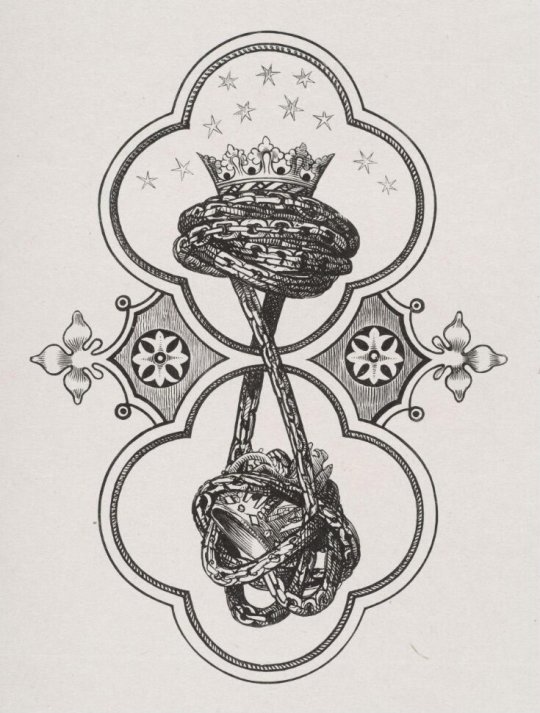



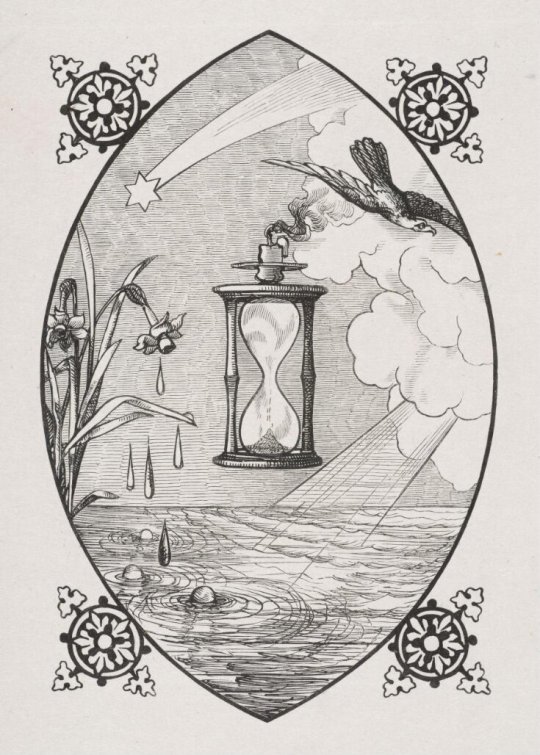
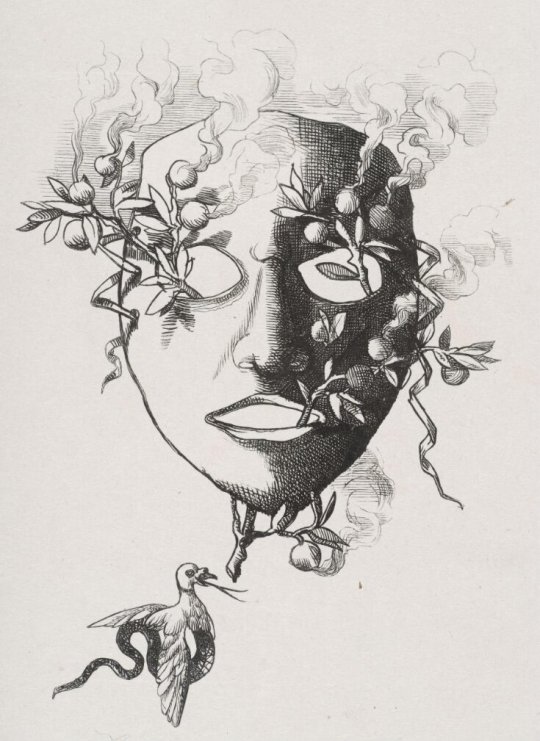

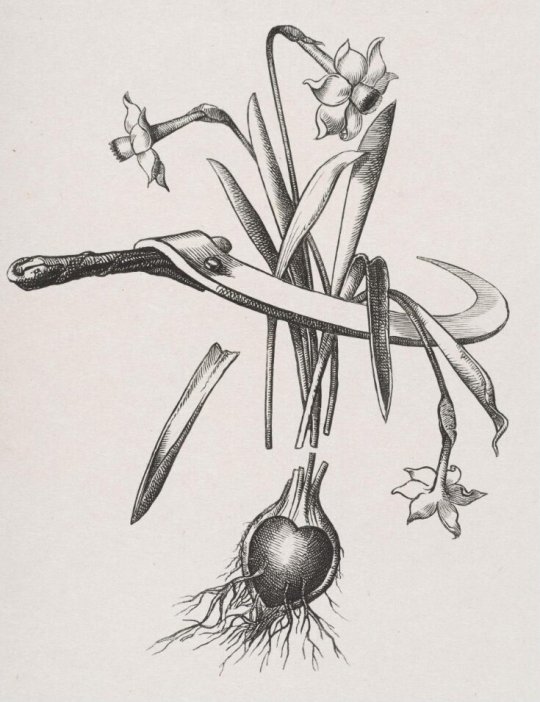

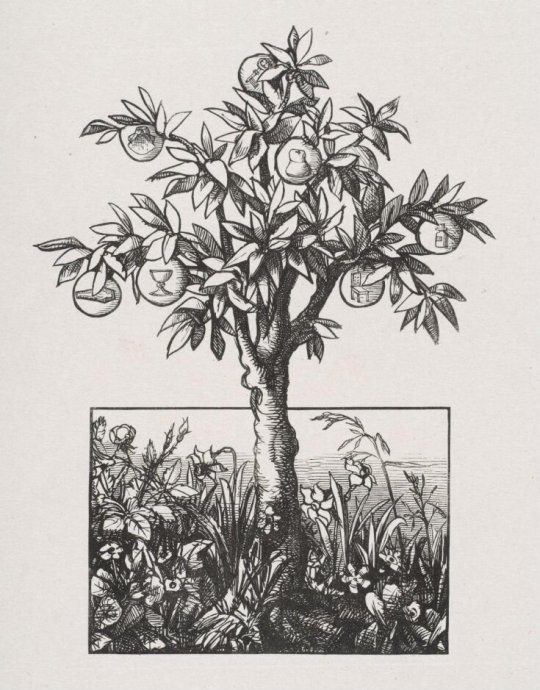
A Selection of Book Illustrations by William Harry Rogers from 'Spiritual Conceits', Published in 1862, London. Medium is woodblock printing on laid paper, with wood-engraving by Joseph Swain. The full collection of illustrations from Spiritual Conceits can be viewed in the V&A Museum archive here.
(Object Links: 1 | 2 | 3 | 4 | 5 | 6 | 7 | 8 | 9 | 10 | 11 | 12 | 13 )
#graphic art#religious art#illustration#woodblock print#printmaking#mid 1800s#victorian era#william harry rodgers#joseph swain#british art#symbolism#surrealism#paper#white#black#b&w
308 notes
·
View notes